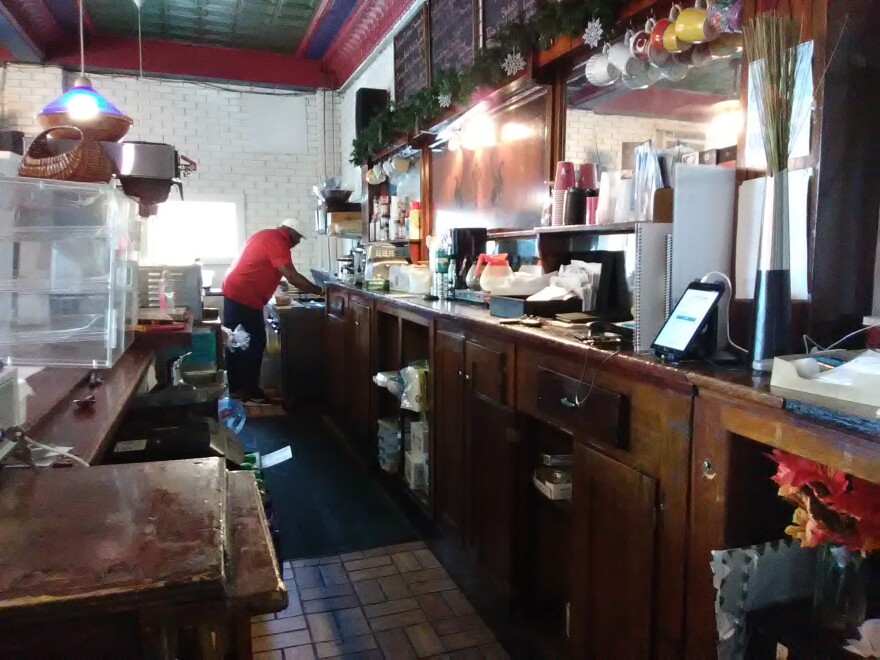The vacant Horace Mann Elementary building is a four-story mass of fire-red brick that dwarfs the houses orbiting it’s three-acre plot.

“Moms actually used to walk to get their children and wait for them after school,” said Teresa Radwan, a longtime resident of the Marshall-Shadeland neighborhood. “They can’t do that anymore because [their] children are now getting on a bus.”
Radwan said the Mann school, which her sons attended, was once a center of the community. Today it’s more of a black hole.
Radwan gestured to a sign that reads “Danger Hazardous Area,” sitting on a fence that cages the school’s jungle gym.
“There are no places for children around here,” she said.
According to state data, 237 students attended Horace Mann during the 2005-2006 school year. That summer, it was one of 22 Pittsburgh neighborhood public schools that closed due to declining enrollment and excess capacity in the district.

That was actually the second time Horace Mann has shuttered. The district first closed the school in 1984, only to reopen it in 1988.
Pittsburgh is a city defined by its neighborhoods, so when schools close, communities not only lose education centers, but also social and cultural nexuses.
Walking past vacant houses, Radwan said the Mann school closing was economically devastating for Marshall-Shadeland.

“Here’s another one, boarded up, overgrown, trash,” she said. “This is where people used to live when they had children who had children who went to Horace Mann.”
Radwan said the reason people leave Marshall-Shadeland is primarily because there isn’t a neighborhood school.
However, it’s probably not that simple.
Pittsburgh has been hemorrhaging population since the 1950s, when the city was home to twice as many residents. Marshall-Shadeland is no exception; it’s a trend that started well before the district closed Horace Mann.
“Often, schools are closed in neighborhoods that are already experiencing disinvestment,” said Stephan Gruber, a professor of urban design at Carnegie Mellon University. “So obviously there is this kind of spiral, right? That once a neighborhood is already in decline, I think closing important civic infrastructure, such [as] libraries and school[s], will accelerate the decline.”
Gruber said social intuitions, like schools, foster community cohesion, so the impact of Horace Mann’s closure shouldn’t be minimized. When communities lose social centers, people interact less with their neighbors.

“People will tend to stay at home and spend less time outside,” he said. “That decreases the opportunity for chance encounters, bumping into people that you know, or don’t know, and interacting with them.”
There are also safety concerns. Research shows vacant buildings can create environments that make people feel less secure, partly because it’s hard to keep empty schools locked.
“People can get access,” said Emily Dowdall, who researched the impacts of school closures in urban areas when she was with PEW Charitable Trusts. “There have been problems with people starting fires in the buildings.”
Much of a neighborhood’s future prosperity hinges on how quickly a new use is found for vacant buildings, like schools. Other district properties have been turned into charter schools, office space and housing. But Dowdall said that's more difficult for older buildings as is evidenced by Horace Mann, which was built in 1874.

“It’s just been a devastation to the community because it’s like an eyesore,” said Michael Blackwell, owner of Café on the Corner, one of the few businesses in Marshall-Shadeland.
Horace Mann is one of five former Pittsburgh Public Schools that is vacant and waiting to be sold. The list price is $285,000, just $100,000 more than what the average Pittsburgh home sold for in 2017.
In the seventh part of our "Dividing Lines" series, Margaret J. Krauss looks at how the district’s roughly 24,000 kids get to school. Find more at wesa.fm/dividinglines.













